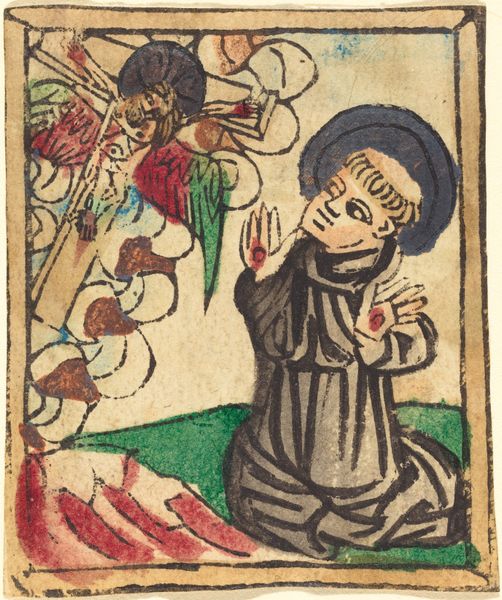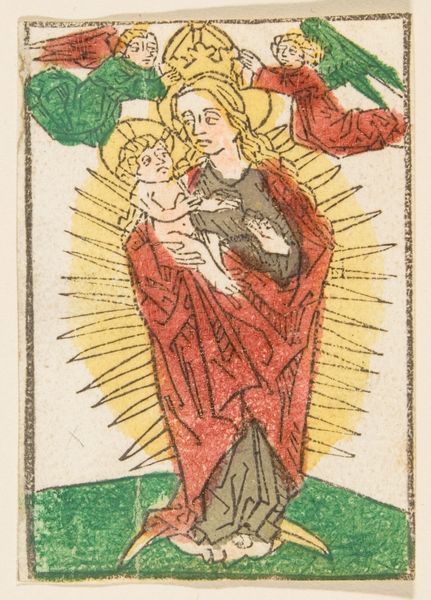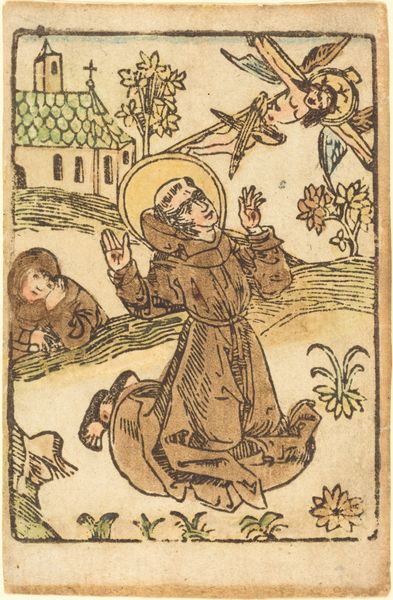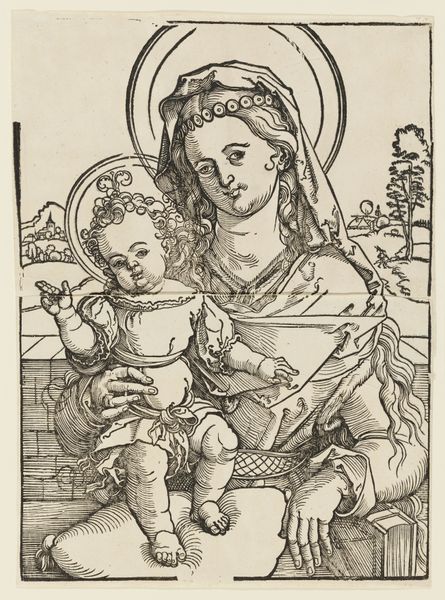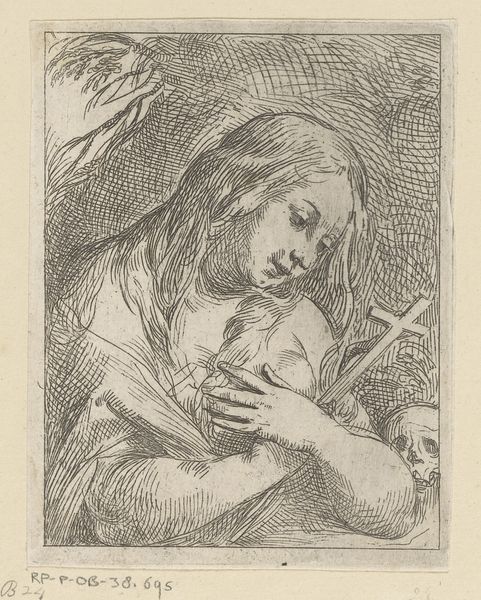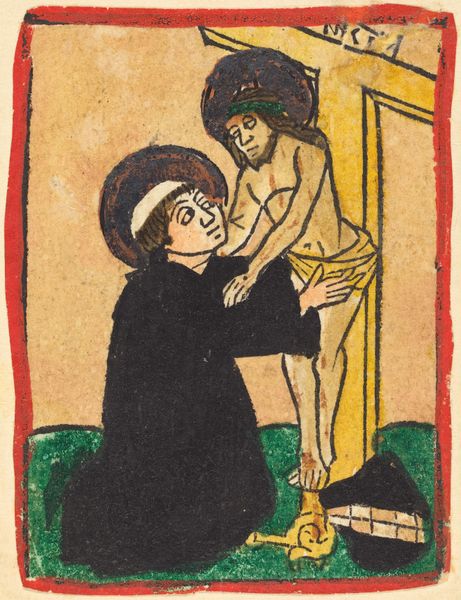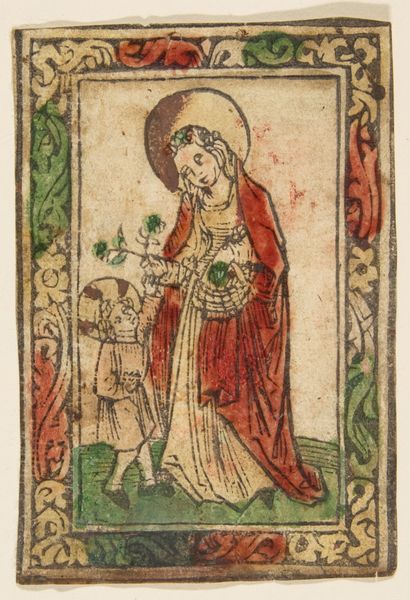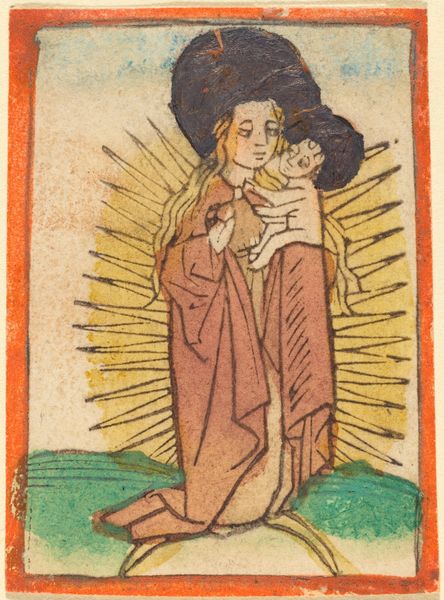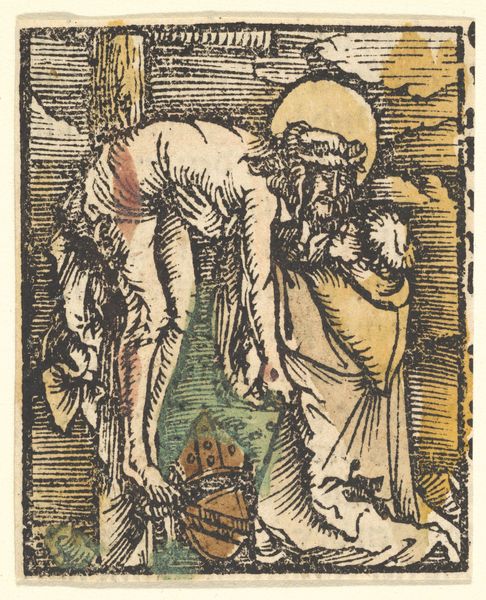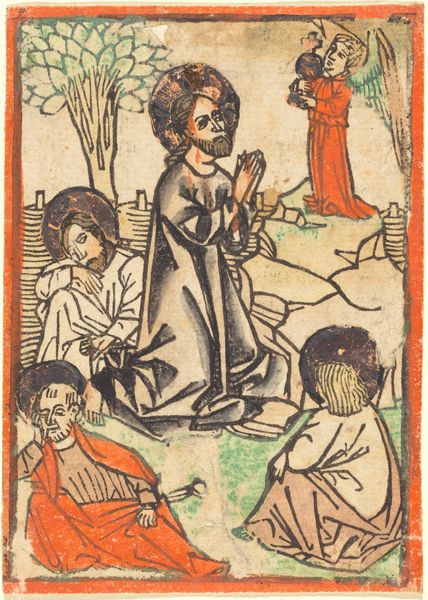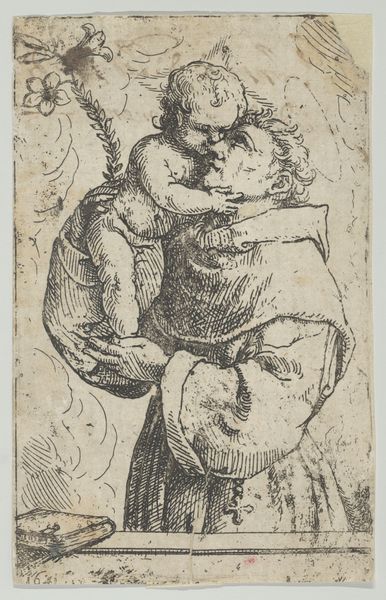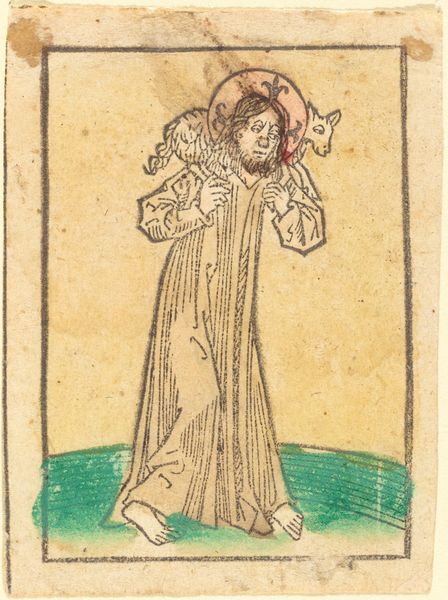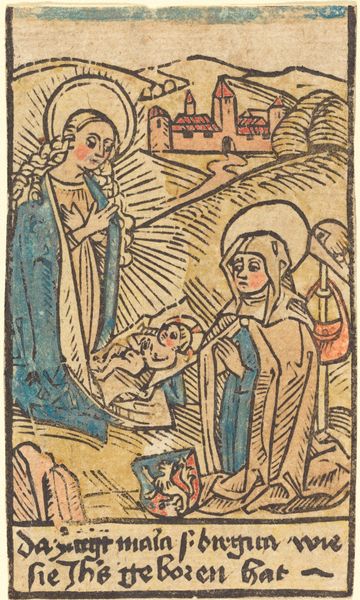
Christ Child With New Year's Wish (Schr. 784) 15th century
drawing, print, ink, woodcut
drawing
medieval
narrative-art
figuration
ink
woodcut
miniature
christ
Dimensions: sheet: 8 5/16 x 6 5/8 in. (21.1 x 16.8 cm)
Copyright: Public Domain
Editor: So, this is "Christ Child With New Year's Wish," a 15th-century woodcut in ink, currently held at the Metropolitan Museum of Art. It’s a small piece, almost miniature in scale, but it presents this really fascinating composition. What do you see when you look at this work? Curator: Initially, one observes the intricate interplay between line and form. The woodcut technique allows for a stark contrast, emphasizing the delicate contours of the Christ Child against the backdrop of densely patterned flora and fauna. Notice the use of line to define the figure's anatomy, albeit with a somewhat flattened perspective, typical of medieval art. How does this linearity strike you in relation to the overall effect? Editor: It creates a sense of formality, almost like stained glass. The outlines contain these blocks of simple color. Curator: Precisely. The limited color palette enhances the graphic quality. It emphasizes symbolic elements such as the halo. Note how it lacks modulation; the emphasis isn't on realistic representation, but on conveying theological concepts through visual means. What could that symbolism be in this miniature artwork? Editor: It could show the contrast between earthly things and divine concepts, and it gives a festive look through decorative visual choices. Curator: Interesting reflection! The formalized depiction, together with linear rendering, presents a symbolic Christ child set apart from the naturalism we often see in later Renaissance works. By engaging with those elements in the picture, this enables to understand a piece on its own compositional terms, seeing how the artwork constitutes the visual components, and engages with symbolism that invites you to study what the composition as a whole presents to you. Editor: Thank you for shedding light on those things, especially about visual analysis and theological context.
Comments
No comments
Be the first to comment and join the conversation on the ultimate creative platform.
